


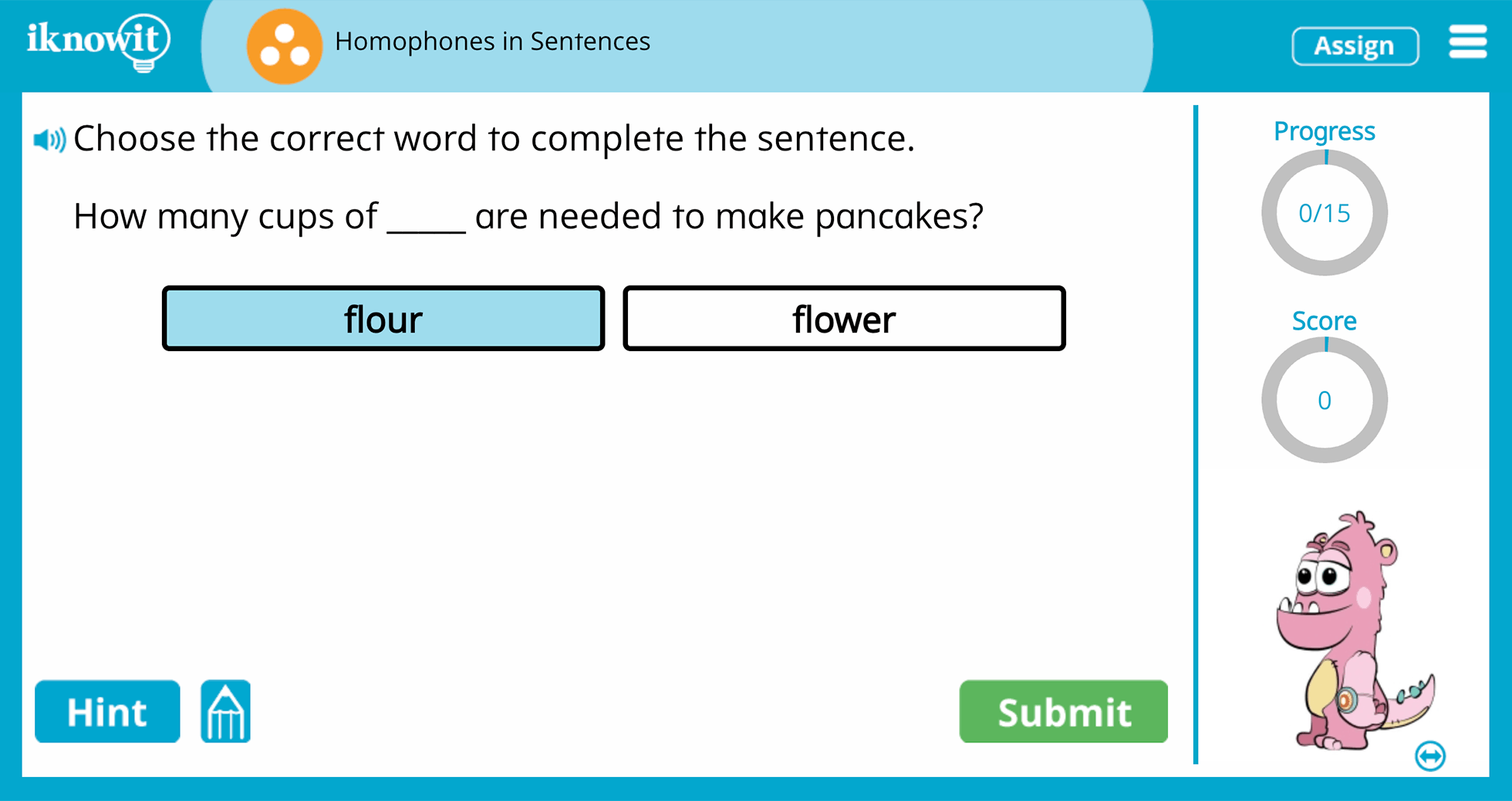
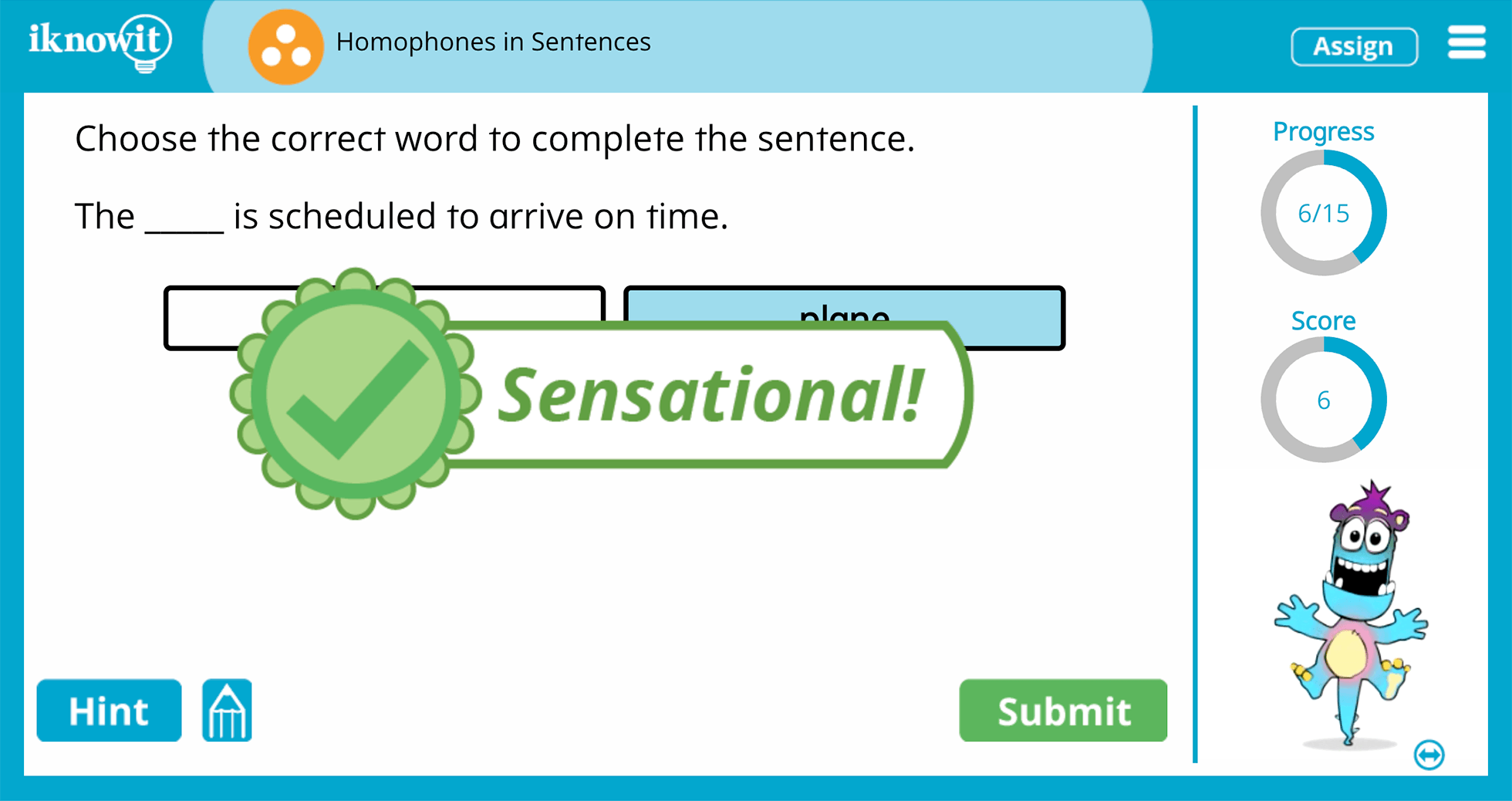
In 3rd-grade English Language Arts (ELA), students encounter homophones, which are words that sound the same but have different meanings and spellings. Understanding homophones is crucial for young learners as it enhances their vocabulary, improves spelling accuracy, and strengthens their comprehension skills. Mastery of homophones enables 3rd-grade students to communicate effectively in writing, demonstrating a deeper understanding of language nuances and word usage. Identifying and using homophones correctly in sentences promotes clarity and precision in written expression, which are essential skills for academic success and effective communication.
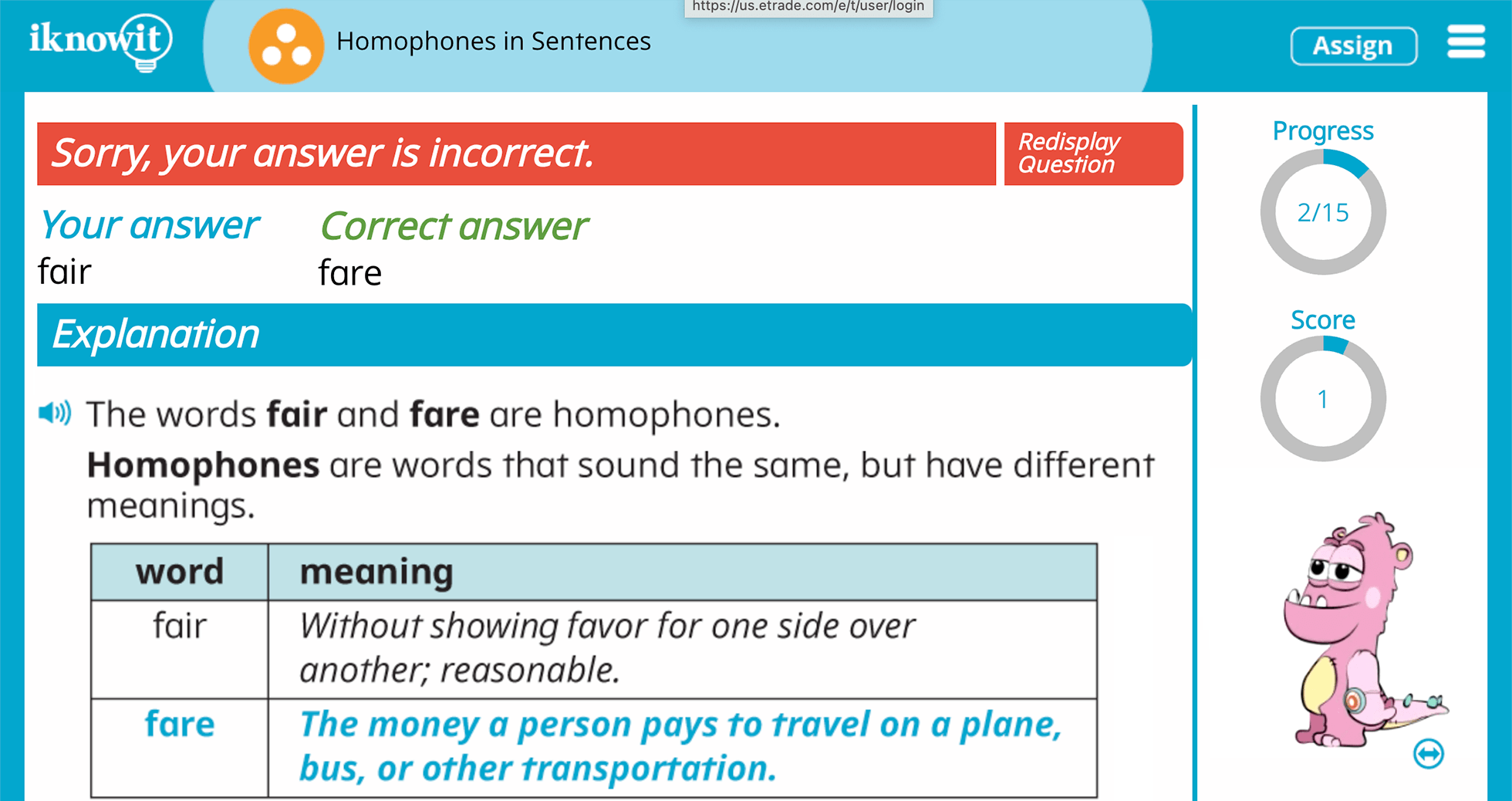
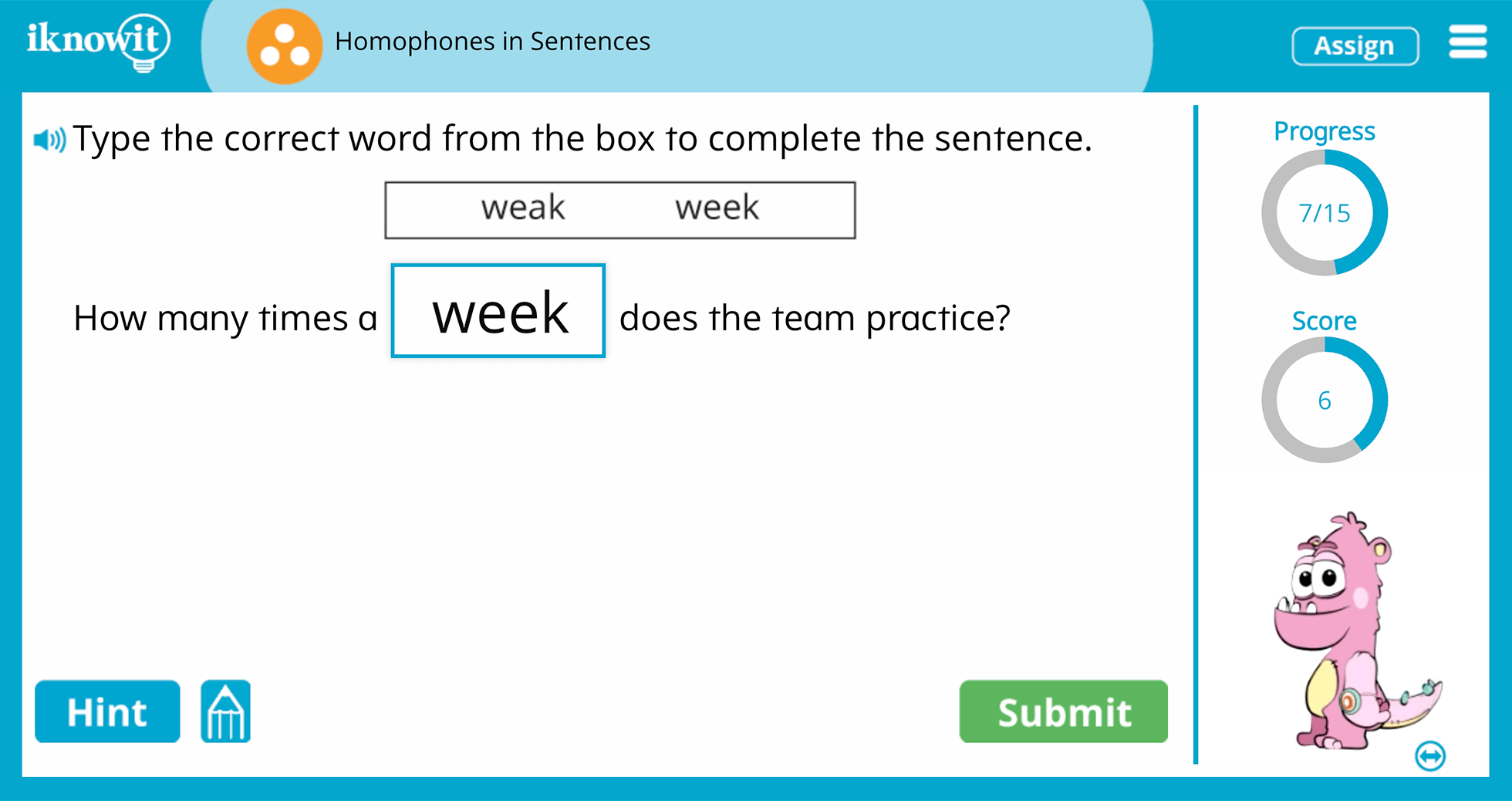
Educators employ various strategies to teach homophones in sentences effectively in the 3rd-grade classroom. Interactive lessons that incorporate visual aids, such as word cards or sentence examples, help students identify and understand homophones in context. Engaging activities, such as homophone matching games or sentence completion exercises, provide hands-on practice and reinforce learning. Teachers can also use mnemonic devices or word association techniques to help students remember the meanings and spellings of homophones. For example, using the phrase "to, too, two" to remember the differences between these homophones can aid memory retention. By providing a mix of interactive, hands-on, and mnemonic-based learning experiences, educators ensure that 3rd-grade students develop a solid understanding of homophones in sentences.
iKnowIt.com offers an online platform for 3rd-grade students to practice and reinforce their understanding of homophones in sentences in an interactive and engaging way. Through a variety of interactive games and exercises, students can explore homophone concepts and enhance their skills. The platform provides a range of activities designed to cater to different learning preferences and abilities, such as homophone sentence completion quizzes and interactive lessons. With immediate feedback and progress tracking features, students can monitor their performance and track their improvement over time. iKnowIt.com's interactive learning approach ensures that 3rd-grade students cultivate a strong foundation in homophones while enjoying an enriching educational experience.
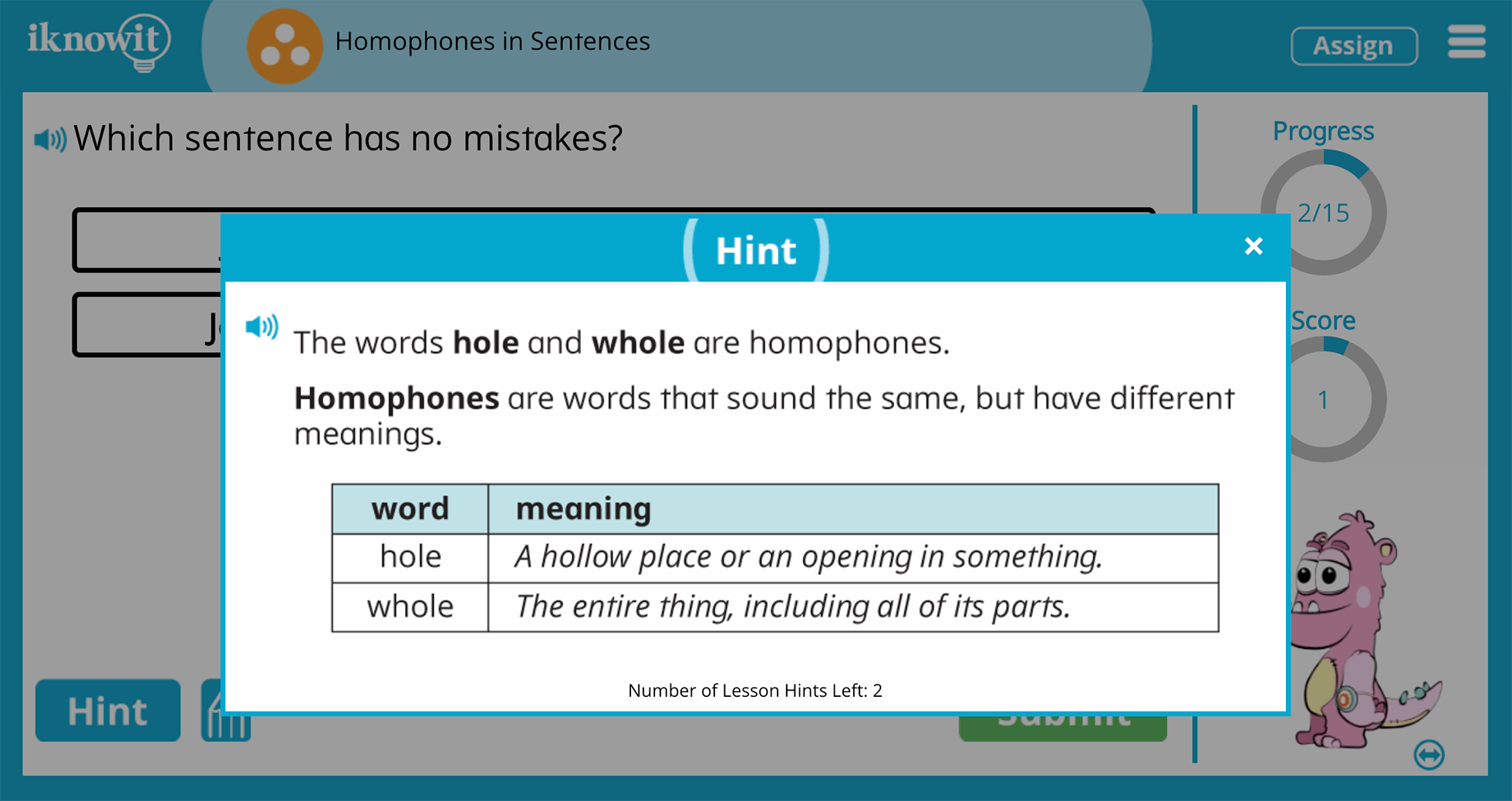
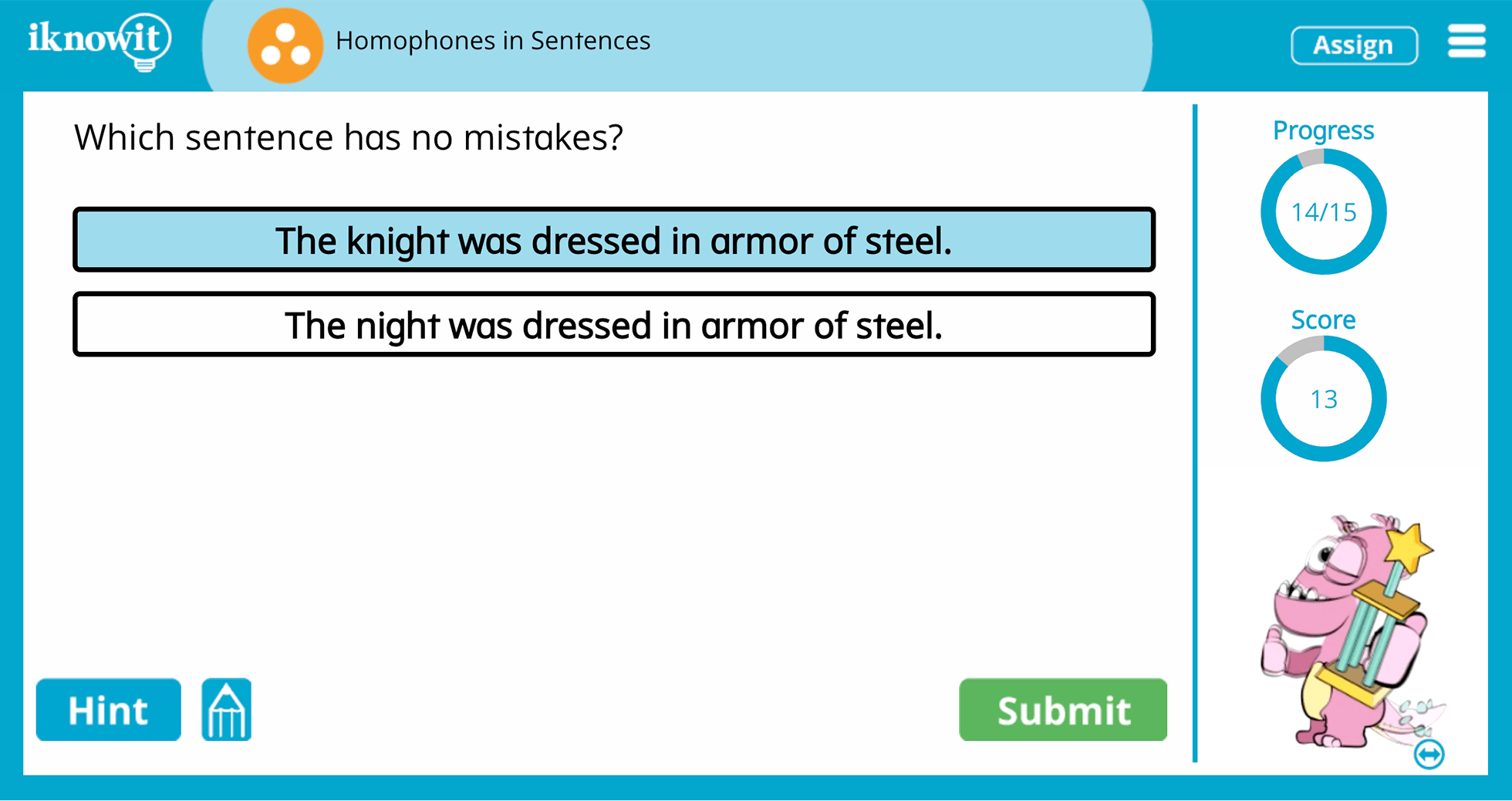
This interactive ELA lesson is categorized as Level C. It may be best suited for third grade students.
None
This skill does not align with any common core standards, but is commonly taught at this grade level.
Multiple Meaning Words (Level C)
Try this lesson to work with words that look the same but can have very different meanings.
Homophones: To, Too, and Two (Level C)
Learn the differences between the words to, too, and two and see how each should be used in sentences.